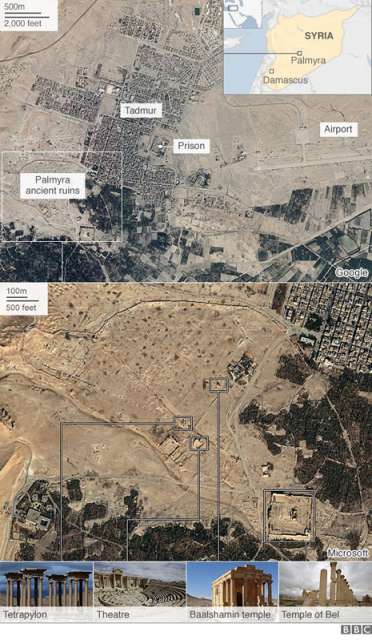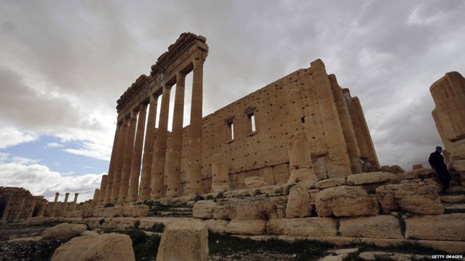The reports come a week after IS blew up another temple at the ancient city.
The militants seized control of Palmyra in May, sparking fears for the site.
The world-famous Greco-Roman ruins are in the desert north-east of the Syrian capital, Damascus.
It was several days after the initial reports of the destruction of another part of the site, the Temple of Baalshamin, that IS itself put out pictures showing its militants blowing up the temple.
Satellite images have confirmed the destruction.

The BBC`s Jim Muir, in Beirut, says that for the extremists, any representation implying the existence of a god other than theirs is sacrilege and idolatry.
Earlier this month IS murdered the archaeologist who had looked after the Palmyra ruins for 40 years.
The family of 81-year-old Khaled al-Asaad told Syria`s director of antiquities that he had been beheaded.
Unesco Director General Irina Bokova praised the archaeologist, saying IS "murdered a great man, but they will never silence history".
The ancient city of Palmyra is a Unesco World Heritage site and was a major tourist attraction before Syria descended into civil war.
Unesco has condemned the deliberate destruction of Syria`s cultural heritage as a war crime.
Diane Darke, a writer on Syria and author of the Bradt guide to the country, told the BBC that the Temple of Bel was a massive structure which had been used as a fortress, a church and a mosque.
Syrians themselves despair that it takes the destruction of a temple to make everybody focus on their country, she said, but they do also feel the loss of their cultural heritage.
"There will be Syrians weeping all over the country at the loss of Palmyra, of the main jewel of the site," she added.
The modern city of Palmyra - known locally as Tadmur - is situated in a strategically important area on the road between the Syrian capital, Damascus, and the eastern city of Deir al-Zour.
IS has used Palmyra`s theatre to stage the public execution by children of more than 20 captured Syrian army soldiers.
The group has ransacked and demolished several similar sites in the parts of neighbouring Iraq which they overran last year, destroying priceless ancient artefacts.
The United Nations estimates that over 250,000 people have been killed in Syria since the war began there four years ago.
Over four million people have fled the country and 7.6 million are displaced inside Syria.
More about:
















































